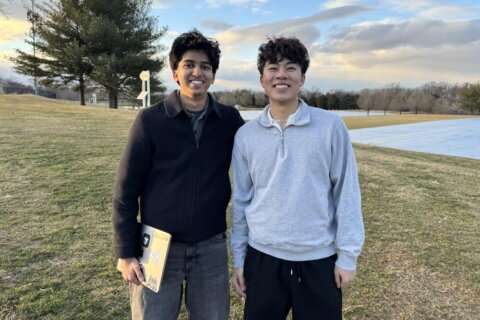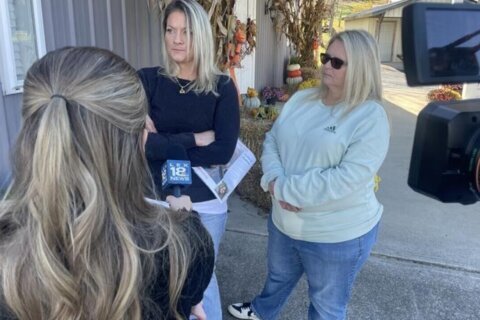There’s an old log cabin that survived the ravages of time, nestled beneath the towering oak trees along the banks of the Reddy Branch Stream on Brookeville Road in Olney, Maryland.
Traffic whizzes by but it seems time stands still at the Oakley Cabin African American Museum and Park, where several picnic benches beckon visitors alongside the one-and-a-half story historic cabin fronted by split rail fence.
“The building that you see on site today is a log cabin. And originally, there were three log cabins constructed in this area. They were built in the 1820s. They were homes of enslaved families. And the cabin here today is obviously the last one remaining standing. And it continued to be lived in up until the late 20th century,” said Stefan Woehlke, a postdoctoral associate in the Historic Preservation Program at the University of Maryland.
The site is used by Montgomery County to share and interpret the history of the Reconstruction Era and lives of the freed slaves who lived at the site in the 1870s and ’80s.
Woehlke teamed up with the county on a project that uses technology to enhance the visitor experience at the 19th century site.
“Most of the time when you come to visit, the site is all locked up, the shutters are closed, you can’t see inside,” Woehlke said.
There’s a historic marker to read and a couple wayside exhibits with pictures and text, but Woehlke wanted something more. So he developed digital content that visitors can view on their smartphones by scanning nine different QR codes that are posted at different locations at the site.
“What we’re able to do with the augmented reality technology is build interpretive content that people can access all the time that’s engaging, that shows parts of the landscape, that can’t be seen today by visitors. And also to create some ways for guests to engage with the site,” Woehlke said. “As long as you have access to the internet, you can use a smartphone or a tablet.”
Scanning the QR codes also provides audio narration and, at one spot, the augmented reality digitally removes the front of the house so you can actually see inside.
With historic sites scattered throughout the county, personnel aren’t always on hand to help people understand what they’re seeing. Woehlke is hoping his model of augmented reality can be replicated at other sites, so visitors can further explore history at their fingertips.
Get breaking news and daily headlines delivered to your email inbox by signing up here.
© 2024 WTOP. All Rights Reserved. This website is not intended for users located within the European Economic Area.








